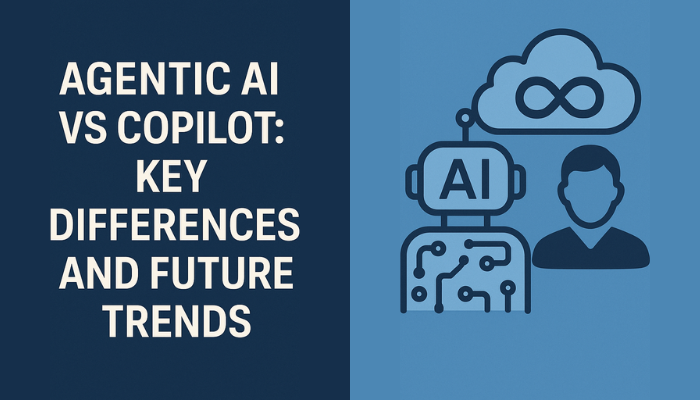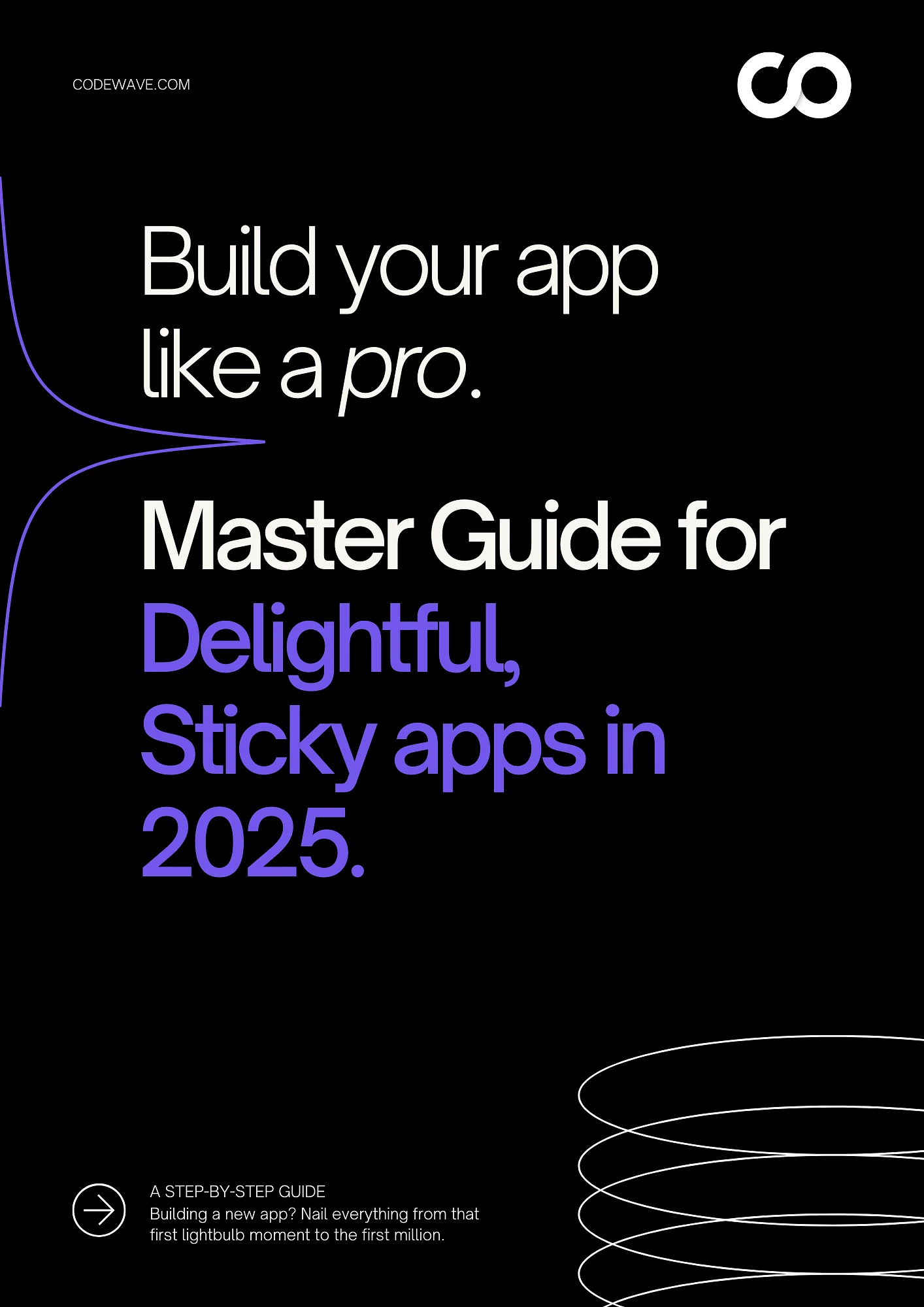Big data is everywhere. Every click, swipe, and transaction feeds into vast data streams. But more data doesn’t guarantee better decisions. Without the right models, organizations end up reacting too late.
Predictive analytics changes that. By applying machine learning to large datasets, businesses can detect patterns, forecast outcomes, and respond faster. In 2020, the predictive analytics software market was valued at $5.29 billion and is projected to grow to $41.52 billion by 2028.
In this blog, you’ll learn how predictive analytics works, how it connects with big data, the tools enabling this collaboration, and what it looks like in practice across industries like retail, healthcare, finance, and manufacturing.
Let’s begin by understanding what predictive analytics really is, how it works, and where it delivers value.
What Is Predictive Analytics?
Predictive analytics is a technique that uses historical data, statistical algorithms, and machine learning to forecast future outcomes. Rather than just reporting on what has already happened, it helps businesses estimate what is likely to happen next.
At its core, predictive analytics identifies patterns in past behavior and applies those patterns to new data. The goal is to reduce uncertainty in decision-making by giving your team a data-backed view of what to expect in the near future.
This method is not about gut instinct or surface-level reporting. It is built on structured datasets, tested algorithms, and repeated learning cycles that improve accuracy over time.
How It Works
Predictive analytics combines three essential components:
- Historical Data: Past sales, transactions, customer behavior, or operational metrics.
- Statistical Algorithms: Techniques like regression analysis or classification models that find patterns in data.
- Machine Learning: Algorithms that learn from data and improve predictions without being explicitly programmed for every scenario.
Once the model is trained on historical data, it can process new inputs in real time or in batch to predict likely outcomes.
Business Use Cases
Here are some practical examples of how predictive analytics is used today:
- Customer Churn Prediction: Identifies which customers are likely to stop using your product based on behavior trends, engagement scores, or support activity.
- Fraud Detection: Flags suspicious transactions by comparing them to historical fraud patterns and anomalies.
- Demand Forecasting: Predicts future inventory needs or sales volumes using seasonal trends, historical purchases, and external signals like weather or holidays.
These forecasts give product teams, operations managers, and marketing leads a head start, allowing them to take action before challenges impact performance.
To understand how predictive analytics works at scale, we need to look at the nature of big data — and why it requires more than traditional analytics.
What Makes Big Data ‘Big’?
Big data is defined not just by its size, but by the complexity of how it flows and how fast it changes. The concept is often broken down into the three Vs: volume, variety, and velocity. Each of these dimensions creates unique challenges for teams trying to extract value from their data.
1. Volume
Modern businesses collect massive amounts of data every day. Think of millions of transactions on an e-commerce platform, years of sales history stored in ERP systems, or continuous sensor data from connected devices in a factory. This level of scale quickly surpasses the capacity of spreadsheets or traditional analytics tools.
2. Variety
Big data doesn’t come in just one format. You may be working with structured data from a CRM, unstructured text from social media, images from product reviews, and machine logs from IoT sensors. These formats don’t follow the same rules, which makes it harder to store, combine, and analyze them using a single method.
3. Velocity
Data is generated and updated constantly. For example, pricing data changes in real time on travel platforms. Customer actions are recorded every second on mobile apps. Without systems that can ingest and process this flow continuously, insights quickly become outdated.
Common Sources of Big Data in Business
- E-commerce platforms: Transaction history, cart abandonment, search behavior
- IoT devices: Sensors in manufacturing lines, delivery vehicles, or smart products
- Social media: User posts, likes, comments, and sentiment data
- Customer CRMs: Purchase history, service interactions, support tickets
- ERP systems: Inventory, procurement, supply chain, and finance records
Why Big Data Alone Isn’t Enough
Many companies collect big data but struggle to act on it. Without predictive analytics, teams face three common issues:
- Noise vs. Signals: Not all data is valuable. It’s difficult to separate meaningful patterns from irrelevant noise, especially at high volume and speed.
- Manual Reporting Bottlenecks: Business teams often rely on static reports that take days to prepare. By the time insights are shared, conditions may have already changed.
- Reactive Decision-Making: Traditional dashboards report on past performance. Without forward-looking models, teams are stuck responding to problems after they occur instead of anticipating them.
Predictive analytics turns this high-volume, messy data into clear signals that teams can use to make faster, smarter decisions. Here’s how it brings big data to life.
How Predictive Analytics Enhances Big Data
Predictive analytics transforms passive data into proactive insight. When paired with big data, it enables businesses to shift from reactive analysis to real-time forecasting and automation.
1. Turns Historical Data into Forecast Models
Historical data holds patterns that often repeat. Predictive analytics uses this data to build models that anticipate future behavior. For example, an e-commerce company can feed two years of sales and seasonal data into a model to accurately forecast Q4 inventory needs.
These forecasts help teams plan ahead, allocate budgets more effectively, and avoid stockouts or excess inventory.
Tools used:
- Amazon Forecast: Fully managed service for time-series forecasting
- TensorFlow: Open-source platform for training deep learning-based predictive models
- Azure Machine Learning: End-to-end platform for developing and deploying predictive models at scale
2. Detects Patterns in Real Time
Predictive analytics is not just for long-term forecasting. It can also scan high-volume data streams in real time to detect emerging patterns. In retail, for instance, a machine learning model can monitor point-of-sale systems, mobile app usage, and web traffic to adjust pricing based on live demand shifts.
This level of agility enables businesses to capitalize on short-term trends, respond faster to market changes, and improve customer experience.
3. Supports Automated, Data-Backed Decisions
Predictive models are often embedded into business systems to trigger automated decisions. These decisions might include:
- Offering dynamic discounts during low traffic periods
- Sending fraud alerts when suspicious activity is flagged
- Delivering personalized promotions based on recent user behavior
By reducing human dependency in high-volume decisions, businesses gain speed, consistency, and accuracy across operations.
4. Identifies Anomalies Early
Anomaly detection models are especially valuable in industries where timing and precision are critical. In financial services, for example, predictive analytics can spot transaction patterns that deviate from the norm – flagging potential fraud or system abuse within seconds. When connected with AI operations (AIOps) platforms, these alerts can trigger automated responses, helping security and operations teams address issues before they escalate.
These capabilities are made possible by a stack of technologies built to handle the scale and complexity of big data. Let’s look at the tools driving this collaboration.
Key Technologies Powering the Collaboration
Turning big data into forward-looking insights requires the right mix of technologies. These tools help you move from raw data collection to accurate forecasting and business-ready outputs. Each one plays a specific role in managing scale, speed, and complexity.
| Technology | Role in Predictive Analytics and Big Data |
| Machine Learning (ML) | Learns from large datasets to predict future outcomes |
| Apache Spark | Processes real-time data streams and supports distributed computing |
| TensorFlow | Trains and deploys deep learning models for advanced predictive tasks |
| Amazon SageMaker | Builds, trains, and scales predictive models in a cloud-based environment |
| Hadoop | Stores and handles large volumes of structured and unstructured data |
| Power BI / Tableau | Presents predictions and trends in visual dashboards for business decision-makers |
With this foundation in place, let’s explore how industries are using predictive analytics and big data to drive measurable impact.
Industry Use Cases: Predictive Analytics Meets Big Data
When paired with big data, predictive analytics becomes a practical tool for solving high-impact problems across multiple industries. It enables faster decision-making, more accurate forecasting, and real-time optimization. Here’s how organizations in various sectors are applying it to create measurable business outcomes.
Retail and E-commerce
Retailers deal with huge volumes of transaction and behavioral data across digital and physical touchpoints. Predictive analytics helps convert this data into personalized shopping experiences and leaner operations.
- Product Recommendations: Models trained on customer browsing, purchase patterns, and demographic data suggest relevant products in real time. For example, when a customer adds a product to their cart, the system can recommend similar or complementary items that increase cart size and relevance.
- Inventory and Demand Forecasting: By analyzing seasonal trends, sales velocity, and historical buying behavior, companies can predict product demand more accurately. This helps reduce overstock, prevent stockouts, and improve cash flow management.
- Churn Prediction and Retention: By identifying disengaged customers through declining activity or support interactions, businesses can run proactive retention campaigns and increase customer lifetime value.
Healthcare and Life Sciences
Predictive analytics supports healthcare providers in delivering better outcomes while managing costs and operational complexity.
- Readmission Risk Forecasting: Hospitals use machine learning models trained on EMR data to identify patients likely to return within 30 days. Early identification enables tailored follow-up care and reduces readmission rates.
- Anomaly Detection in Patient Vitals: Wearables and monitoring systems continuously collect data on heart rate, blood pressure, and oxygen levels. Predictive models can flag critical changes in real time, improving response time and safety.
- Patient Volume Forecasting: During seasonal spikes or health emergencies, predictive models help anticipate demand for care services and guide resource allocation.
Manufacturing and Industrial IoT
Manufacturing teams rely on predictive analytics to improve uptime, efficiency, and supply chain coordination.
- Predictive Maintenance: Sensor data from machines is used to detect early signs of failure. For example, vibration data from a production line might indicate a bearing is wearing out, allowing for a scheduled replacement before failure disrupts production. Explore how big data and analytics drive predictive maintenance in manufacturing.
- Production Quality Monitoring: Analyzing production parameters in real time helps identify patterns that lead to defects, reducing waste and rework.
- Supply Chain Forecasting: Predictive models evaluate supplier performance, shipment reliability, and market conditions to forecast delays and optimize sourcing strategies.
Financial Services and Fintech
Predictive analytics gives financial organizations a competitive edge by enhancing risk management, fraud prevention, and customer experience.
- Credit Risk Scoring: Lenders use predictive models that include transaction history, income trends, and alternative data to assess creditworthiness. This expands access to credit while managing default risk.
- Fraud Detection in Real Time: Transactions are analyzed based on device fingerprints, IP locations, and behavioral patterns. Suspicious activity, such as a login from a new country or a rapid series of withdrawals, can trigger immediate alerts and automated blocks.
- Customer Segmentation and Upselling: By clustering users based on behavior and risk profiles, banks and fintech apps can deliver personalized financial advice and relevant offers.
Energy and Utilities
In the energy sector, predictive analytics improves operational reliability, safety, and sustainability.
- Demand Forecasting: Utility companies analyze historical usage patterns, weather data, and grid load to predict electricity demand by region and time of day. This helps with load balancing and prevents outages.
- Equipment Failure Prediction: Sensors on turbines, transformers, or pipelines feed data into models that predict wear and mechanical stress, enabling timely intervention and reducing downtime.
- Renewable Energy Output Forecasting: Predictive models estimate solar or wind energy generation based on environmental factors, helping optimize energy distribution and storage.
Agriculture and AgriTech
Farmers and agri-businesses are using predictive analytics to improve yield, reduce waste, and automate decision-making.
- Crop Yield Estimation: Data from soil sensors, drones, and weather feeds is analyzed to forecast harvest volume and guide irrigation and fertilization plans.
- Pest and Disease Detection: Image analysis and climate data can help detect early signs of crop diseases or pest outbreaks. This allows for targeted treatment before damage spreads.
- Resource Optimization: Predictive models recommend when and how much to irrigate or apply nutrients, helping conserve water and reduce input costs.
Education and EdTech
Educational institutions and learning platforms use predictive analytics to improve student success and optimize program offerings.
- Student Risk Monitoring: Models analyze participation, grades, and attendance to identify learners at risk of dropping out or falling behind. Early intervention improves outcomes and retention.
- Course and Content Recommendations: By evaluating past performance and interest areas, platforms can suggest relevant learning paths, increasing engagement and completion rates.
- Enrollment Planning: Schools and universities can predict enrollment patterns and plan staffing, infrastructure, and marketing budgets accordingly.
Travel, Mobility, and Hospitality
In industries with fluctuating demand and high customer expectations, predictive analytics brings clarity and speed.
- Dynamic Pricing: Airlines and hotel chains adjust prices in real time by analyzing search trends, availability, and competitor pricing. This helps maximize revenue during peak and off-peak periods.
- Customer Experience Personalization: Travel platforms use behavior data to recommend destinations, packages, or experiences tailored to the traveler’s profile and history.
- Operations Forecasting: Predicting guest volume or vehicle usage helps companies optimize staffing, inventory, and routing to improve service quality and reduce operational costs.
Each of these use cases ties predictive models directly to operational goals, whether it’s reducing costs, improving outcomes, or personalizing customer interactions. If you’re ready to start using predictive analytics in your business, here’s a clear roadmap to guide you.
How to Get Started: Strategy for Business Leaders
If you’re looking to integrate predictive analytics into your operations, it’s best to start with a focused plan. The goal is not to overhaul everything at once, but to identify high-impact opportunities where predictive models can solve real business problems quickly.
Step 1: Identify Business Questions
Start with specific, measurable questions that predictive analytics can answer. For example:
- Which customers are at risk of churning in the next 30 days?
- How much stock will we need for our top products next quarter?
- Are we likely to miss revenue targets in a specific region?
The sharper the question, the more valuable the prediction.
Step 2: Audit Your Data Infrastructure
Assess where your data lives, how clean it is, and whether it’s accessible. Predictive analytics depends on reliable, centralized data sources. Review your CRM, ERP, marketing automation tools, customer support logs, and data warehouse setup. If you’re still shaping your data strategy, this guide can help clarify where to begin.
Step 3: Select a Pilot Project
Choose a low-risk, high-visibility initiative to test predictive analytics. Projects like customer churn prediction, lead scoring, or short-term sales forecasting are common starting points. Set clear KPIs so the business value can be measured within a few weeks or months.
Step 4: Choose Your Tools
Pick tools based on your team’s skillset, data volume, and infrastructure. Cloud-based platforms such as Amazon SageMaker, Google Vertex AI, Azure ML, or even no-code platforms like DataRobot can help you get started quickly. Pair these with a scalable data storage solution like Snowflake or BigQuery.
Step 5: Build an Agile, Cross-Functional Team
Combine expertise from data science, product, and business operations. This ensures the models are not only accurate but also aligned with real-world needs. The team should include:
- A data engineer to prepare and pipeline the data
- A data scientist or ML expert to build the model
- A product manager or business lead to guide priorities and success metrics
Codewave can support you across this lifecycle — from defining the problem to deploying scalable, predictive systems. Predictive analytics can deliver significant business value, but only when models are built on solid data and applied thoughtfully.
Predictive Analytics Challenges to Watch For
Before scaling across your organization, it’s important to be aware of common roadblocks that can affect accuracy, reliability, and adoption.
- Data Quality and Integration: Predictive models are only as good as the data they are trained on. Inconsistent formats, missing values, and siloed systems can lead to unreliable predictions. Ensuring your data is clean, complete, and well-integrated is a critical first step.
- Model Bias and Explainability: Algorithms trained on biased or incomplete data may produce unfair or inaccurate results. This is especially important in areas like credit scoring or hiring. It’s essential to review your training data and select models that allow for transparency and explainability.
- Overfitting: When a model performs well on training data but poorly in real-world scenarios, it’s often due to overfitting. This usually happens when models are too complex or trained on narrow datasets. Testing models on fresh, unseen data helps reduce this risk.
- Talent Gaps: Building, tuning, and deploying predictive models requires a combination of data engineering, machine learning, and domain knowledge. Many organizations struggle to hire or retain this mix of talent internally. In such cases, working with an experienced external partner can accelerate adoption without overloading your existing teams.
These challenges are manageable — especially when addressed early with the right partner and tools.
What Success Looks Like
When predictive analytics is fully integrated with your big data systems, the results show up across operations, customer experience, and financial performance. These are some of the key outcomes you should expect from a successful initiative.
- Faster Decision-Making Cycles: Instead of waiting for weekly reports or manually reviewing spreadsheets, teams gain access to real-time predictions that guide day-to-day choices. This reduces delay and helps businesses act quickly in fast-moving markets.
- Reduced Operational Costs: Accurate forecasting minimizes overproduction, lowers inventory waste, and helps streamline logistics. Predictive maintenance also reduces unplanned equipment downtime and extends asset life.
- Higher Customer Satisfaction: With better insights into customer behavior, businesses can deliver more relevant experiences. This might include personalized product suggestions, smarter support responses, or proactive outreach based on predicted needs.
- Real-Time Adaptability: Organizations gain the ability to respond to market changes as they happen. Whether it’s a sudden demand surge, a supply chain disruption, or an emerging risk, predictive systems help teams stay ahead without guesswork.
These benefits compound over time, creating a smarter, more agile organization that can continuously learn, adapt, and improve.
Why Predictive Analytics Is the Future of Big Data
Big data tells you what happened. Predictive analytics tells you what’s coming — and how to act before it does.
As global data generation accelerates toward 181 zettabytes by 2025, businesses can no longer afford to rely on manual reports or post-mortem analysis. Predictive models help you automate insight generation, anticipate demand, and drive faster, more confident decisions. According to research, companies using predictive analytics are 2.9 times more likely to outperform peers on revenue growth.
Whether you’re trying to reduce churn, forecast sales, optimize inventory, or detect fraud early, predictive analytics unlocks the forward-looking intelligence your team needs to stay ahead.
Why Codewave for Predictive Analytics?
Codewave helps you turn raw data into predictive intelligence that drives real business action. We don’t rely on generic templates or plug-and-play models. Instead, we work closely with your team to understand the specific decisions you need to make faster, and we build machine learning models that align with those goals.
1. Tailored Models That Reflect Your Business Reality
We design predictive models around your operations, data landscape, and KPIs. Whether it’s anticipating demand, identifying churn signals, or forecasting risk, we use your historical data to train models that fit your use case. Our engineers use frameworks like TensorFlow, PyTorch, and Amazon SageMaker to train, test, and deploy models that evolve over time with new data.
These aren’t one-size-fits-all solutions. Every model is customized to reflect the nuance of your industry, customer behavior, and operating conditions.
2. Prototyping That Moves Quickly From Idea to Impact
Our approach starts with small, high-impact pilots that deliver measurable value within a few weeks. You don’t need to wait months to see results.
A typical project moves through:
- A discovery sprint to define the prediction target and evaluate data readiness
- A modeling phase using real historical data to validate assumptions
- Integration into your analytics tools or operational systems
We don’t just validate the model technically. We test how it supports actual decisions in your workflows, from inventory planning to customer engagement.
3. Integration With Your Existing Systems and Tools
We don’t stop at model deployment. Codewave ensures your predictive system is integrated into your business infrastructure so insights are delivered where they matter.
This includes:
- Syncing predictions with CRM tools like Salesforce
- Pushing outputs into dashboards like Power BI or Tableau
- Embedding decision triggers into ERP, inventory, or logistics platforms
We also help design user-facing interfaces or automation rules so that your business teams can act on predictions in real time, without needing to interpret complex data outputs.
4. Workflow Automation That Puts Predictions to Use
To help you scale decision-making, we combine predictive models with workflow automation. If a model detects an at-risk customer, a support ticket can be created or a retention campaign triggered automatically. If a machine is likely to fail, a maintenance request can be scheduled before downtime occurs.
This bridges the gap between insight and execution, saving time and reducing dependency on manual intervention.
5. Cross-Industry Success You Can Build On
From healthcare to manufacturing, Codewave has delivered predictive systems that reduce costs, improve customer experience, and increase operational agility.
Examples include:
- Reducing re-admission risk for hospitals using clinical data and care timelines
- Improving loan approval accuracy for fintech firms using behavioral scoring
- Optimizing route planning in logistics using predictive traffic and weather data
Browse Codewave’s portfolio to see how we’re delivering predictive results for global teams.
These projects were successful because we combined data science expertise with business understanding, ensuring models were practical, measurable, and continuously improving.
Let’s Turn Your Data into Predictive Power
If you’re ready to move beyond dashboards and into real-time, data-driven decision-making, Codewave is here to help.
We bring together machine learning, cloud infrastructure, and automation design to create systems that predict what’s coming and help you act ahead of time.
Explore Codewave’s AI/ML development services and see how we bring your predictive analytics vision to life — fast, securely, and with real results.
Book a free consultation to get started on your next predictive use case.
Codewave is a UX first design thinking & digital transformation services company, designing & engineering innovative mobile apps, cloud, & edge solutions.







